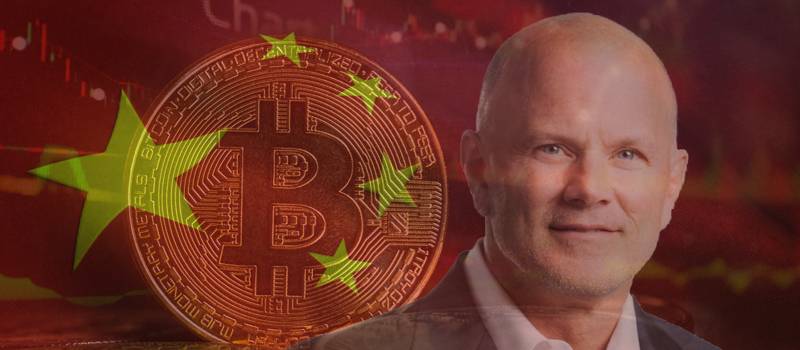“Get more Bitcoin,” says Rich Dad author warning of ‘Biggest Crash in History’
American businessman and best-selling author Robert Kiyosaki says a global crash of epic proportions is coming. “The best time to prepare for a crash is before the crash. The biggest crash in world history is coming. The good news is the best time to get rich is during a crash,” he tweeted early last week, adding, “Bad news is the next crash will be a long one. Get more gold, silver, and Bitcoin while you can. Take care.” The controversial ‘Rich Dad, Poor Dad’ author, whose book has sold nearly 32 million copies since its 2002 release, has previously voiced views against the macroeconomy and is a long-time crypto proponent. Kiyosaki said earlier this month that he expected Bitcoin to fall to as low as $24,000. “Biggest bubble in world history getting bigger,” he tweeted on June 19, claiming he was already buying gold and silver and was waiting on lower Bitcoin prices. His sentiments are similar to those shared by Guggenheim Partners CIO Scott Minerd, who called for a 40% drop in Bitcoin prices in May 2021. The asset traded at nearly $65,000 at its peak but has since fallen to as low as $28,000 early last week. Kiyosaki remains a long-term Bitcoin bull and is one of the many individuals who have made a bold prediction for Bitcoin’s target price. In an interview with news channel Kitco earlier this year, Kiyosaki predicted as much as a $1.2 million price target for the world’s biggest cryptocurrency.
“I think it’s going to $1.2 million in five more years,” he said at the time, claiming to have purchased Bitcoin at $9,000 and looking ‘like a genius’ when the asset reached $55,000, which was the price of BTC at the time of that interview.
Ethereum wallets activity surpasses Bitcoin for the first time ever: Report

According to the crypto metrics firm Santiment, for the first time in the history of digital assets, the overall activity of addresses (or wallets) on the Ethereum (ETH) blockchain exceeded that of Bitcoin’s on Monday of last week. Santiment tweeted: “Following up on yesterday’s report on #Ethereum #FUD and the buying opportunity we saw, today has marked a historic day – For the first time in #crypto history, $ETH address activity is ABOVE $BTC address activity, as prices have soared back above $2,100,” The metric reflects the total number of active unique addresses that have been conducting transactions over the course of 24 hours. Per Santiment’s chart, roughly 651,560 wallets were involved in various activities on the Ethereum blockchain yesterday—versus Bitcon’s 597,280. However, while this demonstrates the general activity, it is hard to say how many actual users were involved because there is virtually no limit to how many addresses a single user or entity could have. Other metric platforms’ data contradicted Santiment’s report. For instance, according to Glassnode, the Ethereum network saw 683,021 active addresses that same day and simultaneously, 787,767 wallets conducted transactions on Bitcoin’s blockchain. This would have been on June 28. Either way, lately Ethereum has been showing better results than most other cryptos in terms of price appreciation. Early last week, ETH was trading at around $2,180, up roughly 8% on that Monday, according to crypto metrics platform CoinGecko. On the other hand, Bitcoin was trading in the ballpark of $35,900, up 4% for the day. In terms of weekly gains, there is relative parity between Ethereum (+14.8%) and Bitcoin (+13.3%), with the former showing slightly better results. As CryptoSlate had earlier reported, the prices of both Bitcoin and Ethereum had fallen the weekend prior by around 15%. At that time, BTC failed to break above the $35,000 level while ETH struggled with the $2,000 mark.
Bitcoin’s ‘biggest buyer’ is seemingly selling BTC, here’s why

Lyn Alden, the founder of Lyn Alden Investment Strategy company, argued in a recent tweet that the demise of Grayscale’s neutral arbitrage trade has played a part in Bitcoin’s ‘top.’ The Lyn Alden Investment Strategy company is famous for providing market research to several individual investors and financial professionals and institutions. GBTC is a popular institutional vehicle for trading Bitcoin, and it is a regulated financial product offered by Grayscale Investments, a multibillion-dollar crypto firm. The publicly traded product holds a small amount of Bitcoin in a custodial account for each share offered to investors, and it is currently one of the only ways for accredited and institutional US investors to legally gain exposure to Bitcoin. According to Alden, skeptics and critics alike who focused on Tether’s impact on bitcoin over the past year would have “probably done better to focus on the Grayscale neutral arbitrage trade instead.” Alden further argued that new competition and entrants in the crypto market took away the unique factor of Grayscale Bitcoin Trust (GBTC), thereby making it less attractive to investors. This was in light of the recent presence of Bitcoin exchange-traded funds (ETFs) and others.
These factors led to a drop in Grayscale’s Bitcoin purchases, which inadvertently affected the market. In her words, “Then, of course, after the biggest buyer vanished, add retail investors pouring into altcoins to euphoric levels; Elon’s ESG backtracking; leveraged traders getting liquidated on the correction; momentum traders stepping away, etc.” GBTC has been trading negatively for this entire year thus far and plummeted to record lows earlier in the year when it was being traded at a negative premium to its net asset value. The GBTC premium reached as low as negative eighteen percent with analysts tying its decline to the demise of institutional demand, according to recent data. Market experts also contributed the decline of GBTC’s NAV to its high management fees, which are considerably higher than that of its competitors. The US firm, Grayscale Investments’ fees, are as high as two percent per year while some of its competitors charge between 0.40 and 0.60 for their fees. Despite this, Grayscale Bitcoin Trust still remains the largest in the world. The firm holds over $38 billion of the leading crypto asset in trust for its client base, and it has consistently attempted to add more digital coins to its portfolio.
Bitcoin proponent Max Keiser sticks with $220,000 BTC price prediction by 2022

Speaking about the recent crash, particularly the apparent sway held by Elon Musk to tank markets, Bitcoin advocate Max Keiser said significant corrections are normal. Adding that the most recent one is “nothing special,” he said his price target for this year remains at $220,000, despite the FUD that has crept in over the past couple of weeks. Keiser felt that the volatile downswings in Bitcoin come with the territory. But on large time frames over its 10+ year history, Bitcoin has still provided 200% annualized gains, and having it, Keiser guarantees Bitcoin will increase your purchasing power. “We’ve been doing this for ten years, we’ve had fifteen of these corrections over the past twelve years, and this current one is an average one. Nothing special. Number two, it always shakes out the weak hands….” Keiser encouraged investors by pointing out that holding any asset through down periods is difficult. He mentioned the example of buying Apple stock in the late-90s after the price had crashed. At the time, investors held a negative opinion of Apple. But in the long run, it turned out to be a good investment. Keiser gave a similar account regarding Amazon, saying, in its time, $AMZN has also gone through 60%-70% corrections in its way to being one of the most valuable companies globally. The crucial thing to consider with Bitcoin is purchasing power, which Keiser said is guaranteed to increase over time – unlike fiat money, which does offer stability but at the cost of decreasing purchasing power.
“So, volatility in Bitcoin is something we want because it’s a tradeoff we accept, because holding fiat money means you have stability, but you’re guaranteed to lose purchasing power.
Holding Bitcoin is volatile, but you’re guaranteed to increase purchasing power.” Keiser has always been a larger-than-life character who has often times drawn criticism for his passionate displays. This was demonstrated during the recent Bitcoin Miami Conference and one such instance in which he was seen on video tearing up money while ranting about government corruption. Setting the record straight, Keiser said that the video was actually from two years ago, in San Francisco, and not during the recent Miami Conference. He then explained that it was all part of his act to hammer home the point that fiat is “worthless garbage.” With a grin, he said, “I’ve ripped up money like that many many times. I think I’ve ripped up close to $50,000 over the years, it’s part of my act where I typically enter ripping up dollars… so people can understand that they’re worthless garbage.” Love him or hate him, Keiser’s presence in the crypto space provides an element of performance that stirs thing up just enough to keep it all very interesting. As for his $220,000 price prediction at the end of the year, a multiple of six times Bitcoin’s current level, that may be a lot to hope for, but then again, stranger things have happened in crypto.
JPMorgan is bullish on crypto staking ahead of eth 2.0 launch

Analysts at US bank JPMorgan wrote in a recent report to clients that staking may become a multi-billion market because they believe that environmental concerns will come into play for top cryptos like Bitcoin. With Ethereum’s upcoming ETH 2.0, the shift to a proof-of-stake consensus design and away from the current proof-of-work design might jumpstart a bigger move to staking-based cryptocurrencies among the general public. JPMorgan’s views comes amidst rising concerns that Bitcoin mining simply demands much too much energy; whereas, staking sees token holders ‘lock up’ their crypto on nodes that, in turn, validate transactions and process blocks. This makes for a blockchain network that operates at a fraction of PoW costs for users and requires significantly less energy to work. The ETH 2.0, whose genesis contract went live last year, is slated for a Phase 1 launch later this year and will create a staking enabled Ethereum network, paving the way for lower fees and far lesser energy requirements compared to its current PoW setup. JPMorgan plans on betting big on just such growth and their analysts say Ethereum’s shift to a PoS design could cause staking payouts to balloon to $20 billion in the quarters following the “launch of Ethereum 2.0” and $40 billion by 2025. Their report stated, “Not only does staking lower the opportunity cost of holding cryptocurrencies versus other asset classes, but in many cases, cryptocurrencies pay a significant nominal and real yield.”
More so, their analysts said staking would become a “growing source of income” for crypto firms like Coinbase, who traditionally rely on trading volumes to reap profits. Such firms could allow ‘passive’ products for investors, ones which stake on their behalf and then payout after a predetermined time period. According to the report, such an opportunity could possibly mean a $200 million revenue opportunity for Coinbase in 2022 alone. “Yield earned through staking can mitigate the opportunity cost of owning cryptocurrencies versus other investments in other asset classes such as US dollars, US Treasuries, or money market funds in which investments generate some positive nominal yield,” the report added. It then noted: “In fact, in the current zero rate environment, we see the yields as an incentive to invest.”
China’s Bitcoin (BTC) ban was a positive in many ways

Galaxy Digital CEO Mike Novogratz gave a recent interview in which he said Bitcoin had shown resilience in the face of FUD coming out of China. Novogratz said the events of the past few weeks have been “an amazing test.” Judging by Bitcoin’s defense of $29k so far, he may have a point. Obviously, the China crackdown, and in particular its mining ban, has triggered shockwaves across the rest of the world. These changes brought sell pressure but also the direct consequence of a plummeting hash rate and longer block confirmation times. Even so, Novogratz maintains that short-term pain will yield “a big net positive” in the future. Speaking to Bloomberg about the recent China crackdown, Novogratz pointed out the issue is about more than just banning mining, but that overall, the mining exodus out of China would be beneficial to the entire ecosystem. “Listen, the Chinese threw everything they could at Bitcoin in lots of ways, right? They’ve banned mining, they’re banning leverage, they’re banning Bitcoin in some places. And Bitcoin still exists, it survived. In lots of ways moving the mining out of China is going to be a big net positive for the ecosystem.”
China’s relationship with Bitcoin has long been a patchy one. Some speculate that the recent wave of FUD was driven by the Chinese Communist Party seeking to crush the competition as they prepare for a national rollout of the digital yuan. China never minded playing dirty, and everyone knows they are not prone to anything coming close to either ethics or principles when it comes to their greed. Under the guise of financial reform, the Financial Stability and Development Committee of the State Council of China said they are implementing new controls to reduce monetary risk. How they love twisting and burying the truth – often projecting their own insecurities within their policies. The Chinese notice, dated May 21, 2021, specifically mentioned a crackdown on Bitcoin mining and severe punishment for those involved with illegal financial activities. They should start by looking within their own leadership. Since then, mining operations in Inner Mongolia and Sichuan have been suspended. Several regions, including the U.S, Kazakhstan, El Salvador, and Iran, have put themselves forward as potential new homes for Chinese miners. The founding partner at Castle Island Ventures, Nic Carter, said implementation of the notice is happening at a rapid pace. He thinks 50%-60% of Bitcoin’s total hash rate will end up leaving China and that Bitcoin mining will become more egalitarian as a result.
Bitcoin is often criticized for the “centralization” of miners operating out of China, with estimates saying the country had been responsible for nearly 65% of the Bitcoin hash rate. However, with the snub from Chinese authorities, other parts of the world can now benefit, as there will be a redistribution of hashing power geographically. That, in itself, will reduce the risk of any one nation “controlling the network.” Although it may take many months to see tangible results, since moving machinery and starting anew in virgin territories will take some time, the feeling is quickly becoming one of optimism and renewed fervor.
The post Digital Asset Insights #23 appeared first on JP Fund Services.
Tradersdna is a leading digital and social media platform for traders and investors. Tradersdna offers premiere resources for trading and investing education, digital resources for personal finance, market analysis and free trading guides. More about TradersDNA Features: What Does It Take to Become an Aggressive Trader? | Everything You Need to Know About White Label Trading Software | Advantages of Automated Forex Trading









































